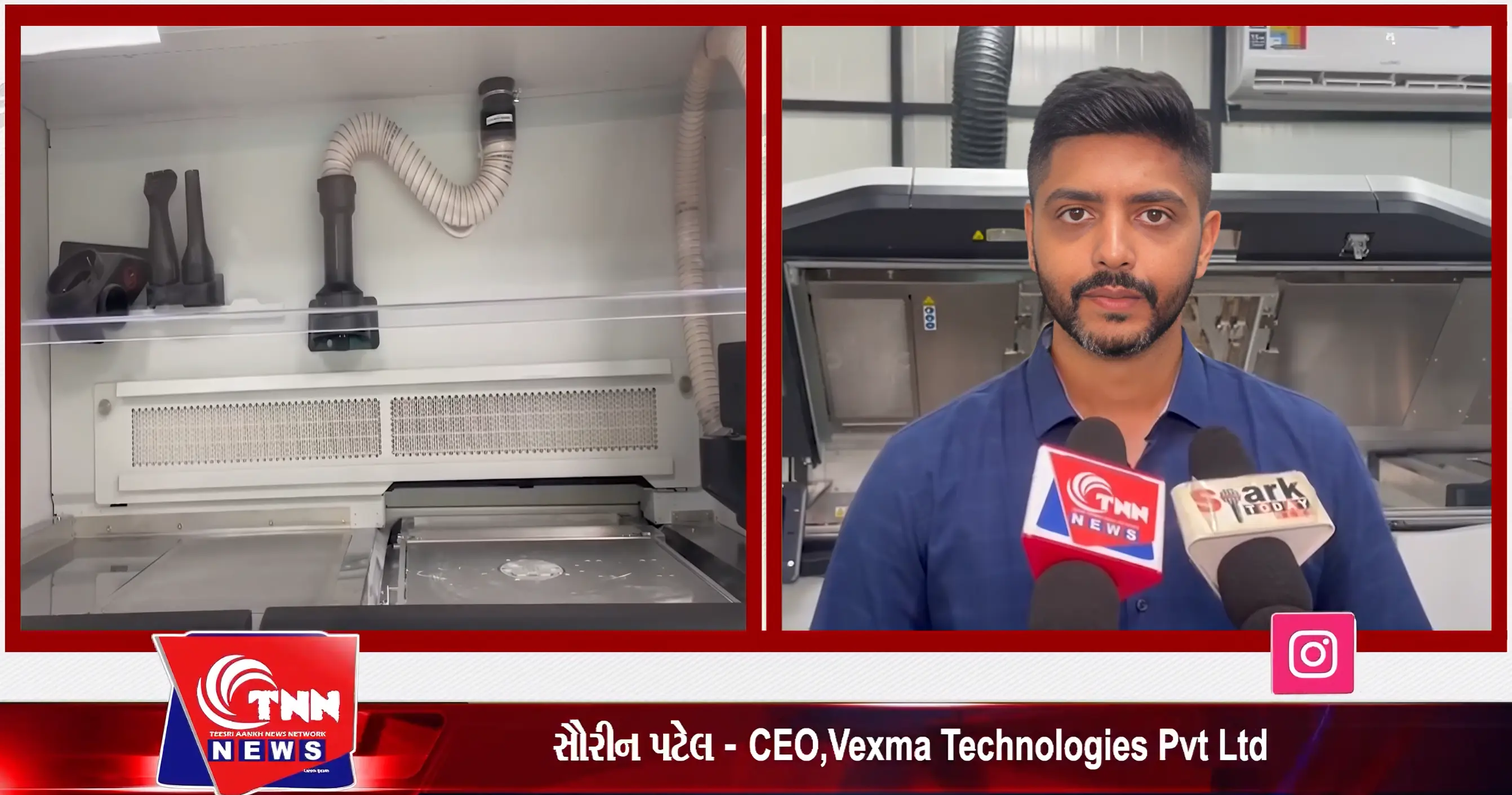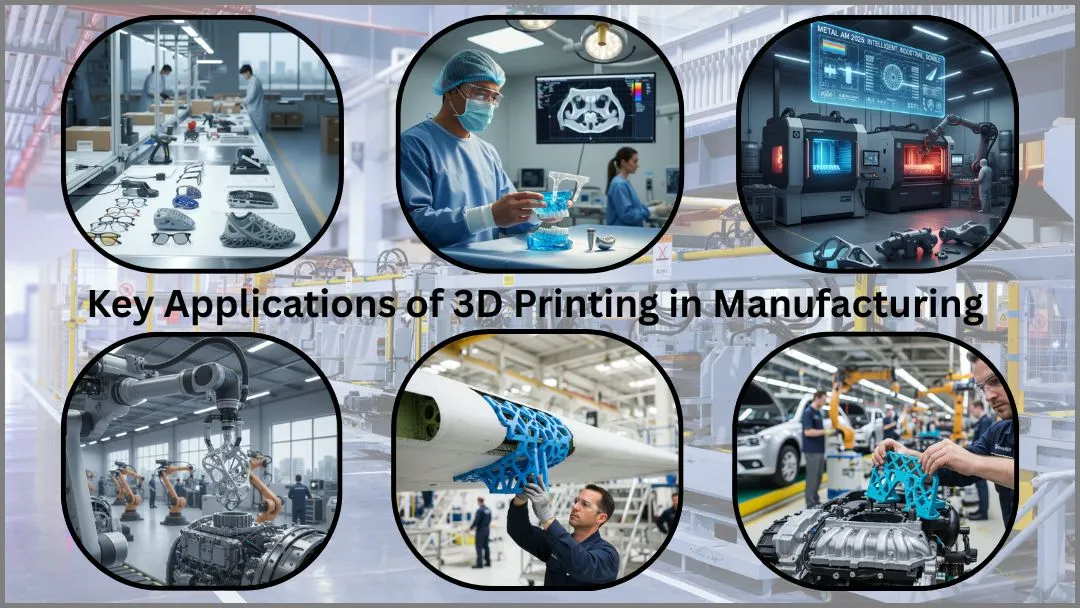Key Applications of 3D Printing in Manufacturing
Three-dimensional printing, commonly known as 3D printing or additive manufacturing, is much more than a futuristic curiosity, today, its applications of 3d printing span across industries, from prototyping to end-use production. Whether you ask “what can 3d printers print?” or wonder “what can 3d printers make?”, the answer is: a staggering diversity of parts, tools, and even living tissues.
Why 3D Printing - What It Enables
Before diving into applications, it’s worth summarizing why 3D printing has become a game changer in modern manufacturing:
-> Design freedom & complexity: Additive methods allow creation of structures and internal geometries (e.g. lattice structures, internal cooling channels) that traditional subtractive or molding methods cannot achieve easily.
-> No tooling needed for low volume: You can skip molds or fixtures, making custom or small-batch parts cost-effective.
-> Fast iteration / prototyping: You can go from CAD to a physical part quickly, speeding up R&D cycles.
-> Reduced waste: Since material is added only where needed, there is minimal waste compared to subtractive machining.
-> Flexibility in materials & hybrid production: From plastics, resins, metals, ceramics to even soft or bio-inks, 3D printing is expanding in materials capability.
-> On-demand localized production: Parts can be printed close to the point of use, reducing inventory and logistics burdens.
Key Application Domains of 3D Printing
Here’s a closer look at real-world uses of 3d printers across diversified sectors:
1. Rapid Prototyping & Product Development
One of the earliest and still most common applications of 3d printing is rapid prototyping. Instead of waiting weeks for injection molds or machining setups, engineers can test form, fit, and function in days.
This is vital in 3d printing in manufacturing, where iterative design calls for fast feedback loops.
2. Automotive & Transportation
Automotive and aerospace industries use additive manufacturing to print lightweight bracketry, airflow ducts, custom interior parts, and structural components. For instance, GE uses 3d printers for manufacturing turbine blades, and many automakers adopt 3D printed tooling and jigs.
This helps reduce weight (fuel savings), consolidate multiple parts into fewer prints, and accelerate custom part delivery.
3. Medical, Dental & Bioprinting
One of the most transformative sectors is healthcare. 3d printing additive manufacturing is employed for:
• Patient-specific implants and prosthetics (e.g. skull plates, bone scaffolds)
• Surgical guides and instrumentation
• Dental crowns, bridges, aligners, full arch models
• 3D bioprinting: printing tissue scaffolds or even cell-laden constructs for regenerative medicine.
4. Tooling, Jigs & Fixtures
Even when final parts are produced by traditional methods, 3d printing is heavily used in manufacturing for tools, jigs, and fixtures. Because these supports are custom, low volume, or require complex shapes, additive manufacturing offers cost and lead-time advantages. Printable tooling drastically reduces downtime on production lines when new parts come in.
5. Consumer Goods & Customization
From footwear (custom insoles) to eyewear, jewelry, and fashion accessories, what 3d printers can make nowadays includes customized goods tailored to individual preferences. This drives new business models like mass customization and on-demand manufacturing.
6. Construction & Architecture
Large-scale 3D printing is emerging for building construction: printing concrete walls, structural modules, and architectural components. Though still nascent, this is a powerful application of additive manufacturing in large form factors.tom part delivery.
7. Electronics, Sensors & Multi-Material Devices
Multi-material 3D printing enables embedding conductive traces, sensors, or flexible electronics inside printed parts. Researchers also explore what 3d printers can print in terms of functional electronics, e.g. conformal graphene circuits on curved surfaces.
8. Education, Research & Hobbyist Use
At universities, labs, and maker spaces, 3D printers are used for teaching design, rapid prototyping, robotics, and experimentation. Students learn hands-on what a three-dimensional printer can do from concept to object.
Types of 3D Printers in Manufacturing
To support these applications, different 3d printers for manufacturing are employed. Some of the major technologies:
-> Multi Jet Fusion (MJF): Produces strong, accurate, and detailed plastic parts with faster production compared to SLS; widely used for functional prototypes and end-use components.
-> Fused Deposition Modeling (FDM): most common for plastics; good for prototyping and non-critical parts.
-> Stereolithography (SLA): resin-based, high detail, smooth surfaces — ideal for visual models, dental parts, jewelry.
-> Selective Laser Sintering (SLS): powder-based, good strength and functional plastic parts.
-> Selective Laser Melting / Direct Metal Laser Sintering (SLM / DMLS): for metal additive manufacturing. Enables strong, load-bearing metal parts in aerospace, medical, tooling.
Selecting a printer depends on material, tolerances, mechanical properties, surface finish, cost, and throughput. Many industrial users combine multiple technologies in a hybrid manufacturing pipeline.
Challenges & Considerations
While the promise is great, the 3d printing industry still faces challenges:
-> Speed & throughput: Large parts take time, which can limit viability for high volume.
-> Material limitations & cost: Some advanced materials remain expensive or have limited availability.
-> Post-processing: Many prints require cleaning, support removal, surface finishing, or heat treatment.
-> Mechanical performance: In some cases, printed parts may lag traditional methods in strength, fatigue life, or consistency.
-> Standards & certification: Especially in regulated fields like aerospace or medical, certification is crucial.
Smart workflow (design for additive, hybrid manufacturing, simulation-driven support) often mitigates these constraints.
Real-World Example Spotlight
Consider aerospace: 3d printing in manufacture of lightweight brackets that integrate internal cooling channels. By replacing a five-part welded bracket with a single 3D-printed component, weight is reduced, assembly simplified, and performance improved.
In medical, patient-specific implants and surgical guides demonstrate what 3d printers can make — personalized shapes that perfectly match anatomy.
Another example: a factory using 3D-printed jigs to retool lines quickly when switching product variants — reducing downtime and costs.
Summary
In sum, applications of 3D printing now encompass prototyping, tooling, final part production, medical devices, consumer goods, architecture, electronics, and beyond. The synergy between 3D printing in manufacturing and 3D printing additive manufacturing is unlocking design freedoms and efficiencies once unimaginable.
As the industry continues to evolve, businesses that embrace these innovations will stay ahead in performance, cost savings, and sustainability. At Vexma Tech, we are committed to helping companies leverage the true potential of additive manufacturing, delivering customized solutions that turn complex ideas into tangible reality.
👉 For details, visit our YouTube Channel:
https://www.youtube.com/@Vexmatech/videos





